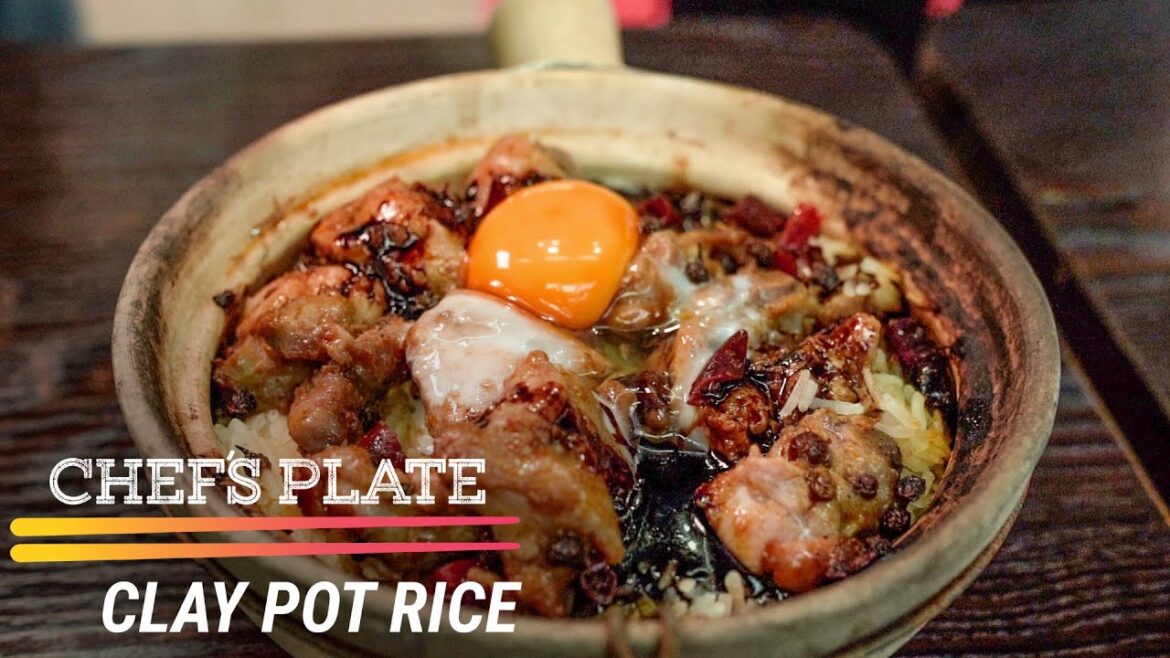Introduction to Clay Pot Rice
Hong Kong’s culinary landscape is a rich tapestry of flavors and traditions, woven together from its vibrant history and multicultural influences. Among the diverse array of dishes that define Hong Kong cuisine, crispy clay pot rice stands out as an ultimate comfort food. This beloved dish, known locally as “煲仔饭” (bāo zǎi fàn), has captured the hearts and palates of locals and visitors alike with its unique combination of textures, flavors, and aromas. The essence of crispy clay pot rice lies not only in its ingredients but also in the cooking technique that creates its signature crispy crust. As we delve into the world of crispy clay pot rice, we will explore its origins, preparation, and the cultural significance that makes it a quintessential part of Hong Kong’s food culture.
The Origins of Clay Pot Rice
The history of clay pot rice can be traced back to traditional Chinese cooking methods, where clay pots were used for their superior heat retention and even cooking. These ancient cooking vessels, made from unglazed clay, have been employed across various Chinese cuisines for centuries. The use of clay pots in rice cooking is believed to have originated in southern China, where the technique was refined and adapted to local tastes and ingredients.
In Hong Kong, the practice of cooking rice in a clay pot has evolved into a beloved culinary tradition. The technique of making clay pot rice involves simmering rice with a variety of ingredients in a clay pot, which allows the flavors to meld together and the rice to develop a distinctive crispy layer at the bottom. This crispy layer, often referred to as “socarrat” in Spanish cuisine, is a hallmark of well-prepared clay pot rice and contributes to the dish’s unique texture and flavor.
The Preparation of Crispy Clay Pot Rice
The preparation of crispy clay pot rice involves several key steps, each contributing to the final dish’s delicious complexity. The process begins with selecting high-quality ingredients and properly preparing them to achieve the desired flavors and textures. Here’s a detailed breakdown of how this comforting dish is made:
Ingredients
- Rice: The foundation of clay pot rice is, of course, the rice itself. Long-grain or jasmine rice is often used for its ability to absorb flavors while maintaining a fluffy texture. The rice is washed and soaked before cooking to ensure it cooks evenly and develops the perfect crispy layer.
- Meats and Proteins: Traditional clay pot rice often includes a variety of meats and proteins, such as chicken, pork, Chinese sausage (lap cheong), and dried seafood. These ingredients are marinated with soy sauce, oyster sauce, and a blend of spices to infuse them with rich flavors.
- Vegetables: Vegetables such as mushrooms, bamboo shoots, and Chinese broccoli are commonly added to the dish. These ingredients provide additional texture and flavor, complementing the meats and rice.
- Seasonings and Sauces: A combination of soy sauce, oyster sauce, and sometimes hoisin sauce is used to season the rice and proteins. The sauces add depth and umami to the dish, enhancing its overall flavor.
Cooking Process
- Marinating the Ingredients: The meats and proteins are marinated in a mixture of soy sauce, oyster sauce, sugar, and spices. This step is crucial for developing the deep flavors that characterize clay pot rice.
- Sautéing and Layering: In a hot clay pot, a small amount of oil is heated, and the marinated meats are sautéed until partially cooked. The rice is then added to the pot, along with a mixture of water and seasonings. The ingredients are layered carefully to ensure even cooking and flavor distribution.
- Simmering: The clay pot is covered, and the dish is simmered over low heat. The cooking time varies depending on the ingredients and the size of the pot, but the goal is to allow the rice to absorb the flavors from the meats and vegetables while developing a crispy crust at the bottom.
- Creating the Crispy Crust: As the rice cooks, a deliciously crispy layer forms at the bottom of the pot. This layer, known as “socarrat” or “锅巴” (guō bā), is achieved through the Maillard reaction, where the rice and other ingredients caramelize and form a crunchy texture.
- Finishing Touches: Once the rice is fully cooked, the clay pot is removed from the heat, and the dish is allowed to rest for a few minutes. The crispy layer at the bottom is scraped and served alongside the rice, adding an extra layer of texture and flavor.
The Cultural Significance of Crispy Clay Pot Rice
Crispy clay pot rice holds a special place in Hong Kong’s culinary culture, embodying the city’s rich food heritage and love for comfort foods. Its popularity can be attributed to several factors:
Comfort Food Tradition
In Hong Kong, clay pot rice is considered a quintessential comfort food, often enjoyed during colder months or on rainy days. The dish’s warm and hearty nature provides a sense of coziness and satisfaction, making it a go-to choice for those seeking comfort and familiarity.
Social and Family Gatherings
Clay pot rice is often served during family meals and social gatherings, reflecting its role as a communal dish that brings people together. The process of sharing a clay pot of rice around the table fosters a sense of togetherness and connection, reinforcing the importance of family and social bonds in Hong Kong’s food culture.
Culinary Craftsmanship
The preparation of clay pot rice requires a certain level of culinary skill and craftsmanship. The ability to achieve the perfect balance of flavors and textures, as well as the art of creating a crispy rice crust, reflects the expertise and dedication of Hong Kong’s chefs and home cooks. The dish’s preparation and presentation highlight the importance of technique and attention to detail in Hong Kong’s culinary traditions.
Variations and Modern Twists
While traditional crispy clay pot rice remains a beloved classic, modern variations and creative twists have emerged, reflecting the dynamic nature of Hong Kong’s food scene. Some popular variations include:
- Seafood Clay Pot Rice: Incorporating seafood such as prawns, squid, and fish into the dish adds a fresh and savory dimension. The seafood is often marinated and cooked alongside the rice, infusing the dish with oceanic flavors.
- Vegetarian Clay Pot Rice: For those who prefer a plant-based option, vegetarian clay pot rice features an array of vegetables and tofu. The use of mushrooms and other umami-rich ingredients helps to create a satisfying and flavorful dish.
- Fusion Styles: Modern chefs often experiment with fusion styles, combining traditional clay pot rice with international ingredients and flavors. For example, some variations include adding elements like truffle oil, foie gras, or unique spice blends to create innovative and gourmet versions of the dish.
Enjoying Crispy Clay Pot Rice
To fully appreciate the essence of crispy clay pot rice, it is essential to savor it in the traditional manner. The dish is typically served directly from the clay pot, allowing diners to enjoy the crispy rice crust along with the flavorful rice and toppings. The contrast between the tender rice and the crunchy crust creates a delightful texture experience, making each bite a satisfying indulgence.
Accompanying the dish with pickled vegetables, chili sauce, or a simple soup can enhance the overall dining experience, providing additional flavors and textures that complement the clay pot rice. Whether enjoyed as a comforting solo meal or shared with loved ones, crispy clay pot rice offers a taste of Hong Kong’s culinary heritage and the comforting embrace of a cherished comfort food.
Conclusion
Crispy clay pot rice stands as a testament to Hong Kong’s rich culinary traditions and the city’s love for comfort foods that bring people together. Its origins in ancient Chinese cooking methods, combined with the unique preparation techniques and cultural significance, make it a beloved dish that captures the essence of Hong Kong’s food culture. From its crispy rice crust to its flavorful toppings, every aspect of clay pot rice reflects the artistry and passion of Hong Kong’s culinary heritage. As we continue to explore and enjoy this ultimate comfort food, we celebrate not only its delicious flavors but also its role in connecting people and preserving the rich tapestry of Hong Kong’s culinary history.


